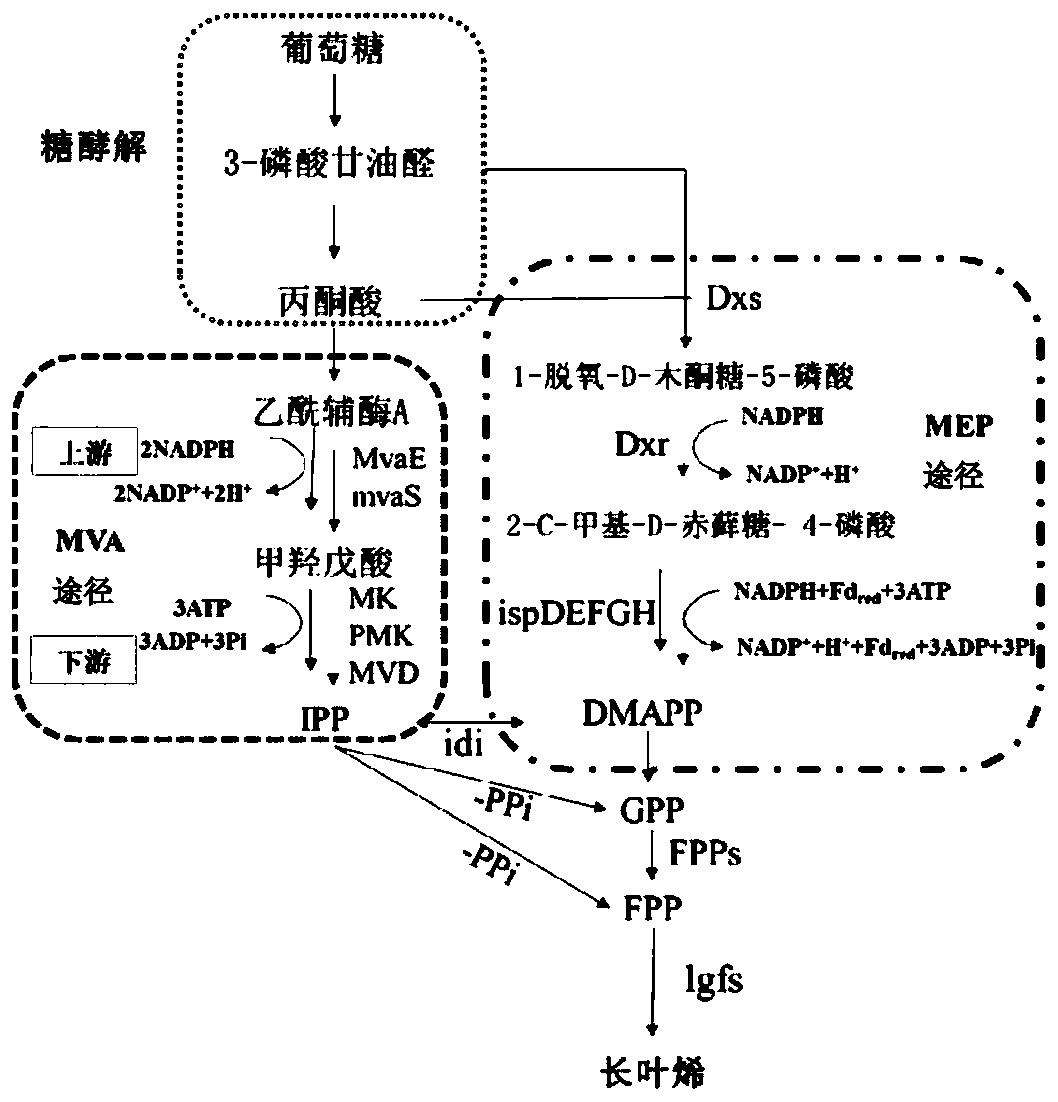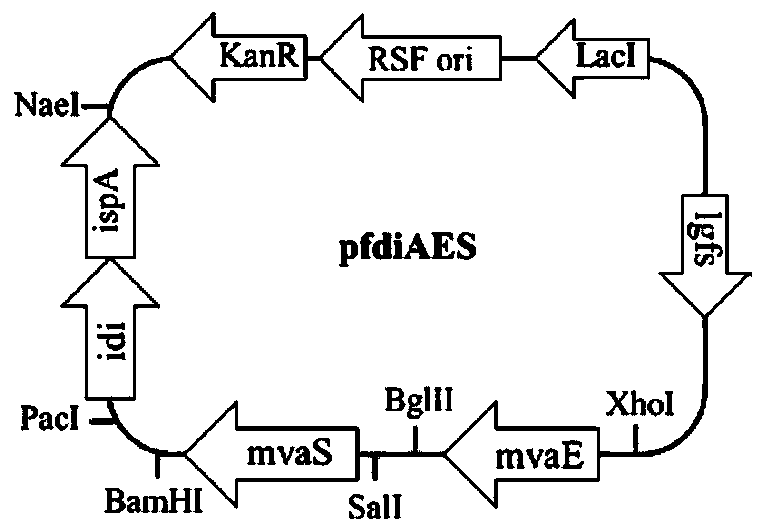Genetic engineering bacteria producing longifolene and construction method of genetic engineering bacteria and application
A technology of genetically engineered bacteria and longifolene, applied in the field of synthetic biology, can solve the problems of high cost pollution, low yield, and limited plant growth in chemical synthesis, and achieve good industrial application prospects
- Summary
- Abstract
- Description
- Claims
- Application Information
AI Technical Summary
Problems solved by technology
Method used
Image
Examples
Embodiment approach
[0072] As mentioned above, the existing methods for preparing longifolene and natural plant extraction methods have disadvantages such as low yield, low efficiency, high cost, and limited plant growth; chemical synthesis methods have high costs and large pollution; There are few reports on the synthesis of longifolene, and industrial production has not been realized. In view of this, the present inventors have conducted a lot of research on the method of biosynthesizing longifolene.
[0073] The inventors researched and designed and found that the longifolene synthase gene lgfS was synthesized by codon optimization using Escherichia coli as the expression host, so that the gene could be expressed more easily in heterologous hosts, Phosphate synthase gene ispA, thus can construct and obtain high-efficiency longifolene-producing genetically engineered bacteria. The inventors further studied the design and found that, through chassis modification, the precursor substance farnesy...
Embodiment 1
[0142] Embodiment 1: Construction of recombinant plasmid
[0143] The chemically synthesized and codon-optimized lgfS gene was cloned into the plasmid prsfDuet-1 through restriction sites BamHI and NcoI to obtain the plasmid prsf-lgfS. The genomes of Escherichia coli JM109 and Streptococcus pneumoniae were used as templates to amplify the genes ispA and idi, and the ispA-idi gene fragment was connected to prsf-lgfs in the form of Gibson self-assembly through the NaeI and PacI restriction sites to obtain the plasmid prsf- lgfs-ispA-idi; similarly, the genes erg20 and idi were amplified using the genomes of Saccharomyces cerevisiae and Streptococcus pneumoniae as templates, and the plasmid prsf-lgfs-erg20-idi was obtained in the same manner.
[0144] The mvaE and mvaS genes were amplified using the genome of Enterococcus faecalis as a template, and the gene mvaS was cloned into the first multiple cloning site of the plasmid prsf-lgfs-ispA-idi with BamHI and SalI, respectively, a...
Embodiment 2
[0147] Embodiment 2: Construction of recombinant bacterial strain
[0148] (1) Preparation of Competent Cells
[0149] Inoculate the glycerol bacteria of Escherichia coli stored at -80°C into 4mL LB test tubes, and after culturing overnight, insert a certain amount of inoculum into 20mL LB medium, so that the initial OD600 is about 0.2. Cultivate in a shaker at 37°C for about 2 hours, and take out when the OD600 reaches about 0.8 to prepare competent cells.
[0150] Put the cultured colony into a 1.5mL centrifuge tube, cool the cells to 0°C in an ice bath, then collect the cells by refrigerated centrifugation at 5000rpm at 4°C for 5 minutes, and resuspend the cells with 100 μL of pre-cooled 10% glycerol (four tubes The cells were mixed in one tube), and the cells were collected by refrigerated centrifugation at 5000 rpm for 5 min at 4°C. The washing was repeated three times, and after the washing was completed, the bacterial cells were resuspended with 100 μL of 10% sterile ...
PUM
 Login to View More
Login to View More Abstract
Description
Claims
Application Information
 Login to View More
Login to View More - R&D
- Intellectual Property
- Life Sciences
- Materials
- Tech Scout
- Unparalleled Data Quality
- Higher Quality Content
- 60% Fewer Hallucinations
Browse by: Latest US Patents, China's latest patents, Technical Efficacy Thesaurus, Application Domain, Technology Topic, Popular Technical Reports.
© 2025 PatSnap. All rights reserved.Legal|Privacy policy|Modern Slavery Act Transparency Statement|Sitemap|About US| Contact US: help@patsnap.com



